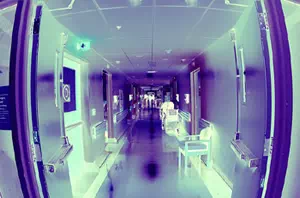 Waste Reduction—Pollution Prevention
Waste Reduction—Pollution Prevention
Pollution prevention (P2) has been defined many different ways for many different purposes, but a rough consensus definition (consistent with EPA's definition) might go something like this:
P2 is reducing or eliminating waste at the source by:
- modifying procedures
- promoting the use of non-toxic or less-toxic substances
- implementing conservation techniques
- re-using materials rather than putting them into the waste stream
Note that this definition excludes treatment, offsite recycling, or disposal. The enviroment may indeed benefit from better treatment methods, clever ways to incorporate recovered material into other products, and safer disposal methods for those residual wastes that have resisted all attempts to prevent them. However, these forms of progress are, from a P2 perspective, essentially admissions of failure, and are not considered to be part of P2 proper.
EPA views pollution prevention as a key policy element, and it supports a number of programs designed to further P2 goals in a variety of industry sectors (including health care), both within and outside the Office of Pollution Prevention and Toxic Substances (OPPTS).
Instituting a P2 program can have a number of benefits, including:
- lower waste handling treatment and disposal costs
- raw material and energy conservation cost savings
- a safer and cleaner workplace
- a better regulatory compliance record
and, of course, a healthier environment.
Most of the suggestions contained in the waste reduction section fall under the definition of P2. (One seemingly unavoidable exception is offsite recycling of paper.) A selection of P2 activities particularly recommended for healthcare facilities are listed below, with links to useful references (including other Internet resources):
Purchasing, Receiving, Inventory Control
- Purchasing/Receiving/Inventory Control Procedures
- Practice Greenhealth’s Ten Step Guide to Environmentally Preferable Purchasing
- Practice Greenhealth’s Ten Step Guide to Reducing Mercury
- Green Building
- Electronics Environmentally Preferable Purchasing
- Hazardous Waste
Material Substitution (using less toxic alternatives)
- Mercury-Free Alternatives
- Practice Greenhealth’s Ten Step Guide to Reducing Mercury
- Alternative Sterilants and Disinfectants
- Practice Greenhealth's Ten Step Guide to Integrated Pest Management and EPA's Integrated Pest Management in Health Care Facilities Toolkit 2021.
- Alternative Cleaning Chemicals
- Practice Greenhealth’s Ten Step Guide to Green Cleaning
- Laboratory Chemical Alternatives
Raw Material Use and Handling
- Raw Material Use and Handling Suggestions
- Practice Greenhealth’s Ten Step Guide to Integrated Pest Management
- Practice Greenhealth’s Ten Step Guide to Green Cleaning
- Reducing Regulated Medical Waste
- Practice Greenhealth’s Ten Step Guide to Regulated Medical Waste Reduction
- Water Conservation
- Energy Efficiency
Waste Segregation
- Reducing Regulated Medical Waste
- Practice Greenhealth’s Ten Step Guide to Regulated Medical Waste Reduction
- Hazardous Waste Segregation



